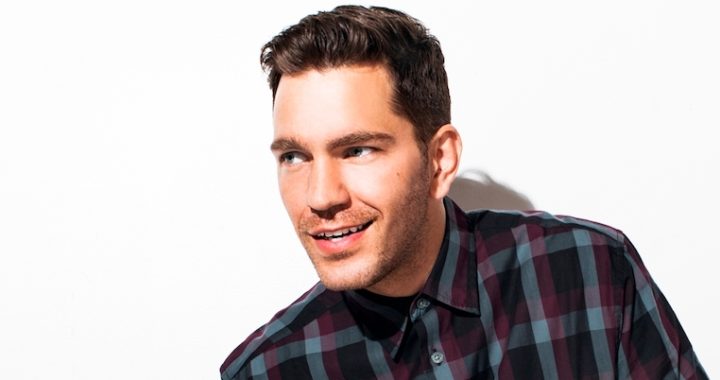In the pop music genres, a great chorus is a self-contained unit. It doesn’t need a verse in order to work, musically speaking; it will work on its own.
That’s certainly not to say that a chorus is all you need, or that a verse serves no useful purpose. In most songs, if all you have is a chorus, boredom would quickly set in for the listener. Not just because you’d have a song with one melody that gets repeated over and over, but because you’d have to hear the chorus lyric endlessly with no support from a verse lyric. And chorus lyrics are usually commentaries on what’s happened in a verse. So without the verse, chorus lyrics are empty.
 Thousands of songwriters are using “The Essential Secrets of Songwriting” eBook bundle to improve their songwriting technique. Get the FREE deal: a copy of “Creative Chord Progressions” when you buy the bundle.
Thousands of songwriters are using “The Essential Secrets of Songwriting” eBook bundle to improve their songwriting technique. Get the FREE deal: a copy of “Creative Chord Progressions” when you buy the bundle.
But setting aside lyrics for the moment, as a musical entity, a chorus needs to sound great on its own, with no support needed from the other sections of the song. It’s why chorus repeats at the end of a song work. When written well, a chorus should be able to go from its end right back its start, and sound great when doing so.
Think of the chorus of the following songs, and you’ll hear what I mean. They all sound like compact musical units, where repeating them gives a measure of satisfaction to the audience:
- “Rolling In the Deep” (Adele Adkins, Paul Epworth)
- “Circle” (Harry Chapin)
- “Uptown Funk!” (Jeff Bhasker, Mark Ronson et al)
Those choruses, and pretty much any chorus from any pop song, have this interesting quality where endlessly repeating sounds just fine. It’s the psychological basis for the tried & true “repeat & fade.” No other section of a song works when repeated seemingly endlessly. At least, I can’t think of one.
So how do you make a chorus sound great when repeated? Here are the characteristics you need to consider:
- A short, tonally strong chord progression. While a verse or bridge progression can sound like a little journey that might wander off to explore other key areas, a chorus progression is typically short, emphasizing the tonic chord. (“Bad” – Michael Jackson: Bbm Eb)
- The end meets the beginning. Especially with chords, the end of a chorus usually moves smoothly back to the first chord. But this repeatable quality also applies to the melody – the end of a chorus tune needs to smoothly connect back to the start of the chorus. (“Honey, I’m Good” – Andy Grammer, Nolan Sipe A D).
- A catchy rhythmic treatment that locks into a groove of some sort. “Catchy” is the key word. Keep in mind that while verse melodies might make use of rhythmic complexity and faster note durations, chorus rhythms typically settle into a groove-based feel. (“Rolling In the Deep”).
You should note that this repeatable quality of good song choruses applies whether, in the final production of the song, the chorus actually takes the opportunity to repeat. Remember that the “repeat and fade” characteristic of pop songs began to become a bit more of a thing of the past in the 2000s.
But even though repeat & fade isn’t used as much anymore, that hasn’t in any significant way changed the structure of choruses. They still usually have (and I would argue need) the ability to sound as though they could be repeated “endlessly” as a structural design feature.
One other point: Verses also do need this feature of being able to connect back to their beginning. That’s how we’re able to have 2 verses before we hear the chorus. But there’s a sense of incompleteness with a repeated verse, since they’re typically written to get musical fulfillment from the chorus that will eventually happen.
 Written by Gary Ewer. Follow Gary on Twitter.
Written by Gary Ewer. Follow Gary on Twitter.
 Do you know how to add chords to that melody you just thought up? “How to Harmonize a Melody” shows you how to do exactly that. It shows the secrets of harmonic rhythm, identifying the key of your melody, chord function, and more. It’s part of “The Essential Secrets of Songwriting” 10-eBook Bundle.
Do you know how to add chords to that melody you just thought up? “How to Harmonize a Melody” shows you how to do exactly that. It shows the secrets of harmonic rhythm, identifying the key of your melody, chord function, and more. It’s part of “The Essential Secrets of Songwriting” 10-eBook Bundle.











“No other section of a song works when repeated seemingly endlessly. At least, I can’t think of one.”
The end of songs like Hey Jude or Lovin’, Touchin, Squeezin’ by Journey repeat “seemingly endlessly”, but I’m not sure these endings qualify as a chorus. However, your point is well taken; they still demonstrate the same characteristics you describe.
It’s funny that you mention “Hey Jude”, because as soon as I wrote that sentence this morning, I thought of it. I was going to mention that even though it’s not specifically a chorus, it certainly operates like one. But I thought that the posting was going to get a bit too long, and “No one will think of ‘Hey Jude’ anyway!” 😀 My blog readership is too clever!
In fact, I think you’ve probably pointed out that “Codas” – sections that optionally appear at the end of a song, but aren’t specifically a chorus, work as endlessly repeatable sections as well, for the same reason that choruses are repeatable. Short, catchy chord progressions, melodies that easily connect back, and a strong rhythmic feel.
Thanks for your keen observation, Don!
-Gary